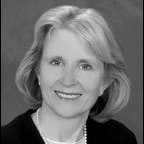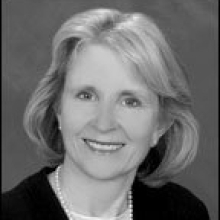Building Benches: Results of Respective Appellate Judicial Selection Methods
 Do the methods by which states choose their appellate judges result in benches with different characteristics? A new study concludes that the most distinctive appellate benches are in "merit-confirmation" states, in which the governor's appointment power is constrained, perhaps substantially, by the required consent of a separately elected body. The study also confirms prior researchers' observations that, compared to other selection methods, merit selection chooses a statistically significantly fewer number of women for the appellate bench than other selection methods. Using new data documenting judges' demographics and prior legal careers, the study suggests the reason may lie in how merit selection weighs women's private-practice experience.
Do the methods by which states choose their appellate judges result in benches with different characteristics? A new study concludes that the most distinctive appellate benches are in "merit-confirmation" states, in which the governor's appointment power is constrained, perhaps substantially, by the required consent of a separately elected body. The study also confirms prior researchers' observations that, compared to other selection methods, merit selection chooses a statistically significantly fewer number of women for the appellate bench than other selection methods. Using new data documenting judges' demographics and prior legal careers, the study suggests the reason may lie in how merit selection weighs women's private-practice experience.
As my thesis project for a master of laws in judicial studies from Duke University, I gathered more than two dozen data points about each of the 1,280 judges sitting on state appellate benches as of February 2015. Then, with the assistance of Duke Law School's Guangya Liu, Ph.D., I sorted the data by judicial-selection method. The results shed light on how the various selection methods produce appellate benches that are distinctly different in some ways, the same in others.
I began by recognizing that in each state in which the governor appoints appellate judges without a formal "Missouri Plan" merit-selection process, that appointment power is not unconstrained, but is subject to the consent of a separately elected body. Moreover, in each of these "merit-confirmation" states, which prior researchers have characterized merely as "appointment states," applicants for appointment are first vetted by a separate commission (established by state constitution or by longstanding executive order) that resembles the independent nominating commissions in merit-selection states.
The 2015 data I gathered show the following:
- "Merit-confirmation" produces the most distinctive benches, with judges who have more legal and judicial experience; these benches boast proportionately more former prosecutors, more former judicial clerks and more judges with other government-law experience.
- More appellate judges in election states than other states come from private practice. Fewer of them have prior judicial experience, and more were educated locally. Many judges in election states first take the bench when they are appointed to fill an interim vacancy. And although the prior literature understood those appointees to have about the same qualities as their elected counterparts, I found that is not so. In several respects, most notably race, appointed judges in election states are significantly different from their elected counterparts. In addition to differences in the nature of their legal experience and their education, interim appointees are more likely to be non-white. The distinctive characteristics of the appointed judges tend to bring the overall characteristics of the appellate benches in election states more in line with the national norm across all selection methods.
- Non-white persons are represented across and within all selection methods at rates roughly equivalent to their representation in the Bar. My study also confirms other researchers' observations that although women are represented on state appellate benches nationwide at a rate that approximates their membership in the Bar, women are disadvantaged by merit selection, which chooses a statistically significantly fewer number of women than other selection methods. I suggest the reason has to do with the influence that business interests may wield with the nominating commission and the governor in merit selection. Across all selection methods, female judges are statistically significantly less likely than male judges to have come from the private sector. The differential is greatest by far on the benches in merit-selection states, where nearly 89% of the men have practiced in the private sector, but only 74% of the women have done so. Likewise, far more of the male judges than the female judges in merit-selection states practiced in business law firms. Given that, nationwide, fewer women are in private practice and those who do join private law firms are less likely than men to remain there, it seems possible that women are less likely than their male counterparts to have formed significant relationships with business clients that may influence the appointment process in merit-selection states. In other words, to the extent that business interests wield influence in merit selection, they may be more likely to exercise that influence in favor of the lawyers who have represented them in significant roles, and, at least to date, those lawyers tend to be male, not female. On the other hand, merit selection is a more favorable path to the bench for women than men with prior non-prosecutorial government service.
For more details and analysis, see "Building a Bench: A Close Look at State Appellate Courts Constructed by the Respective Methods of Judicial Selection," 53 San Diego L. Rev. 829 (2016).


